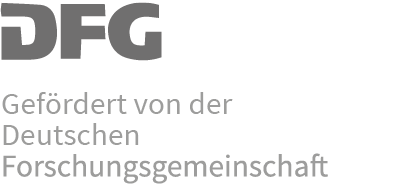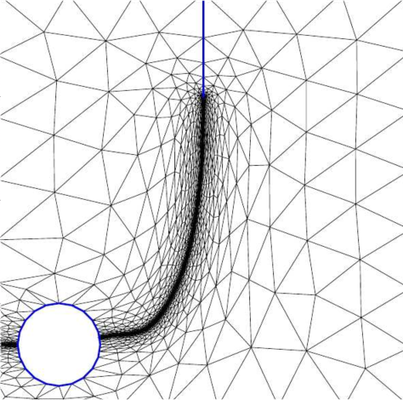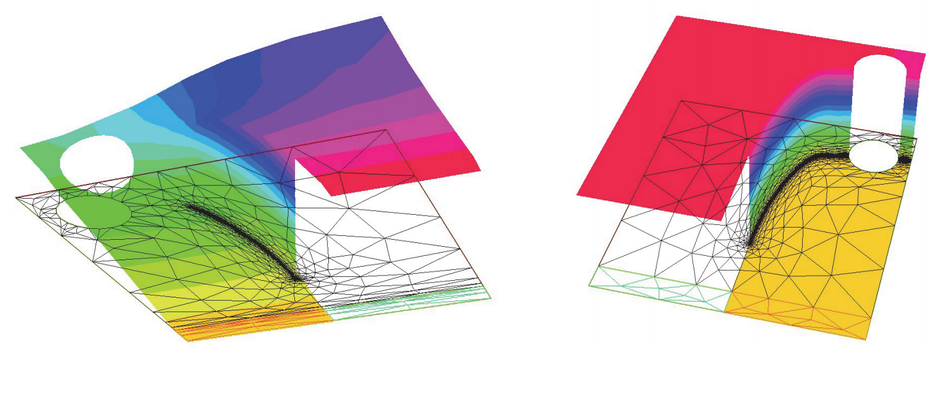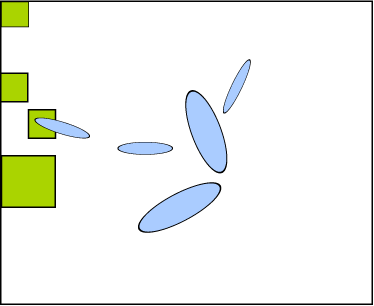A brittle material, subjected to an external force, first deforms itself elastically, then it breaks without any intermediate phase. A mathematical model of brittle fractures has been proposed by Francfort and Marigo. The quasi-static evolution of the fracture is based on the successive minimization of an energy on the material displacement, designed according to the Griffith?s principle of energy balance between elastic energy and a fictitious crack energy. For a fixed time the energy functional can be approximated by an Ambrosio-Tortorelli functional, which can be solved by an alternating minimization algorithm involving the solution of elliptic PDEs.
Despite the realistic and physically sound modeling, this approach has the drawback that any actual discretization is a bias towards a proper fracture propagation. Using traditional isotropic finite element discretization this problem can only be minimized by applying very fine meshes, which drastically increases the computation time as well as the memory demand of the algorithms. Another remedy was recently proposed using adaptive anisotropic remeshing, with the following advantages:
[1] The number of degrees of freedom and the computational times are dramatically reduced, despite the remeshing.
[2] The remeshing does not alter the energy profile evolution.
[3] On the crack tip the automatically generated mesh is nearly isotropic and does not constitute an artificial bias for the crack evolution.
As a consequence we always obtain physically acceptable crack evolutions. Besides, it remains an open and very challenging problem to provide rigorous proofs for the reduced complexity as well as for the more fundamental properties (2) and (3). These very serious theoretical difficulties motivate us to consider the by now standard framework of frame discretizations for elliptic operator equations. Let us recall that a frame is a spanning system of elements in a Hilbert space with certain redundancy properties, i.e., the frame elements are not in general linearly independent. Adaptive numerical methods based on frames have been first addressed in the context of wavelet frame discretizations. However, a theory for general frames is available. The solutions of the brittle fracture evolution at different times are expected to be smooth functions away from a smooth discontinuity set. This class of functions can be nearly optimally represented by so-called shearlet frames. In particular the approximation is far better than that using isotropic systems. By developing an adaptive frame method based on shearlet frames for the simulation of brittle fracture evolutions we expect the following fundamental advantages:
Adaptive frame methods solve the original problem defined on function spaces (Sobolev spaces) by adaptively solving an infinite dimensional problem defined over sequences; in a some sense, they perform a digitization of the analog problem.
Once this equivalence is established, the methods can be rather easily analyzed in terms of their convergence and complexity; While FEM are based on (adaptive) grids (which are refined or remeshed) and they introduce a natural bias towards the evolution of the fracture, shearlets are an infinite dimensional system which is simultaneously offering to the adaptive scheme all the possible directions and degrees of freedom which are needed to a certain accuracy. In other words shearlets are instantaneously providing us with all the possible futures with no present bias!





